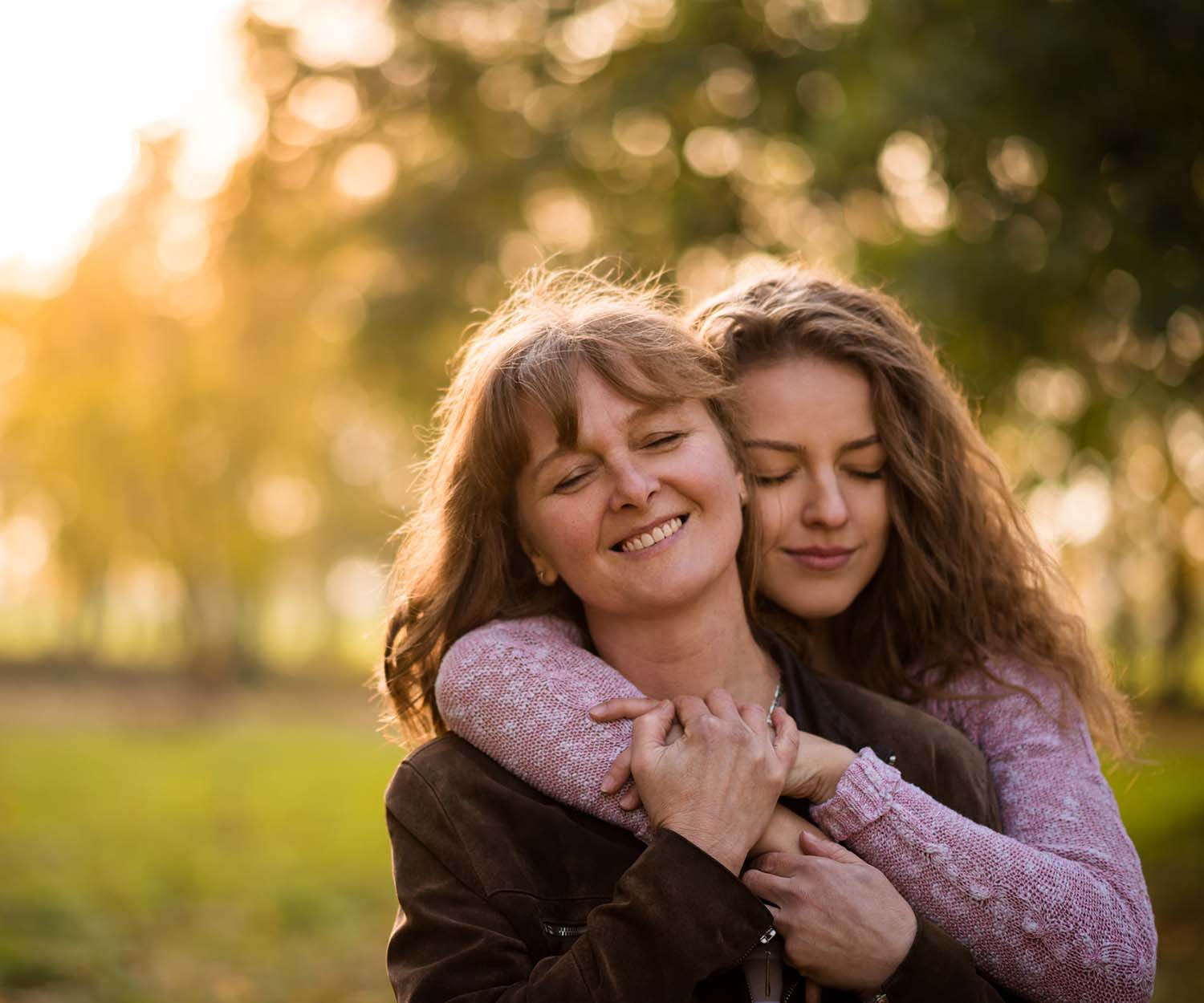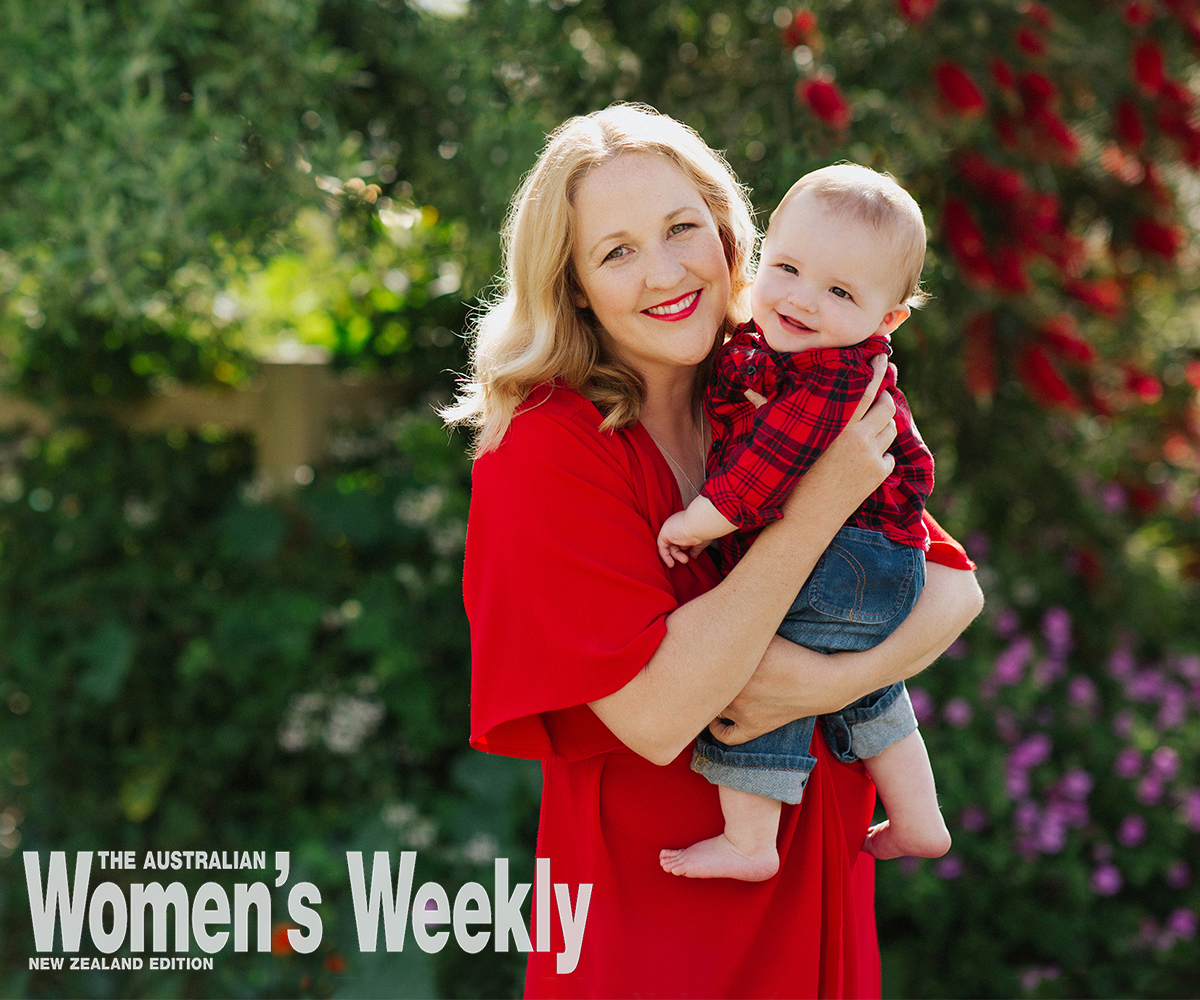For someone who has suffered the unimaginable tragedy of losing a husband and a son within 16 days of each other, Julie Zarifeh uses the word “lucky” considerably more than you might imagine.
The Christchurch mum of three is one of a team of six New Zealanders and Australians who star in Camino Skies, a documentary about the famous pilgrimage route through Europe, the 800km Camino de Santiago.
Julie, 55, had first heard about the walk back in 2010, when the movie The Way came out, and had mentally pegged it as something she might want to do one day. But when the idea reappeared seven years later, life was very different.
It was in late October 2017, and Julie’s beloved husband Paul Zarifeh was in the final stages of his three-year battle with pancreatic cancer. She saw an ad for the walk, calling for New Zealand and Australian pilgrims who would be interested in hiking the Camino de Santiago as part of a documentary. The walk was due to start the following April, and Julie knew that by then, Paul would have died and she would be in the beginning stages of life without him.
“It appealed as something to do and get away from New Zealand for a while, to do this big adventurous activity. I knew it was going to be daunting to go and do it on my own; what appealed more than anything was that there would be fellow Kiwis and Australians doing this walk.”
Paul’s death from pancreatic cancer had been something of an inevitability – the survival rate from the disease is alarmingly low, with some people only lasting months after diagnosis. A major surgery bought him more time, and Julie, Paul and their three children, Sam, Jared and Kristi, were able to spend a good amount of that together.
“We were really lucky; we had two years of relatively good health on Paul’s part. We bought a campervan and took to the road to explore New Zealand, and also managed a wonderful family holiday to Croatia and Italy. We had a fabulous time and created fabulous memories; a lot of them were just him and I, and then me staying home and one of the kids or one of his four siblings going to have one on one time with him. So we were really lucky.”

Before Paul died, the family explored New Zealand by campervan.
The Camino de Santiago is a route that has been well-trodden by pilgrims since the 9th century, when the bones of Jesus’ apostle James were believed to be discovered in a tomb in Northern Spain.
As well as being one of the most important Christian sites in history, the Camino has also found fame as a journey for pilgrims seeking answers, peace, solitude; a rite of passage for the spiritually minded. More than 200,000 pilgrims walk the path of St James every year and it has become a tourist industry for the parts of Europe it runs through.
For Julie, it was less about following the holy path and more about taking on a significant physical challenge on the other side of the world.
As a clinical psychologist, she knew that keeping active and finding distraction were key coping mechanisms that had worked for her personally in the past; she had lost a brother to a brain tumour when he was 37 (Julie was 34), and her father the year before Paul died. Then she lost her mother nine months to the day after Paul’s death. Grief, she says, was not an unfamiliar experience for her.
Paul passed away peacefully on November 23, 2017, after spending the previous three months being cared for by the family at home.
But then, an unexpected horror quickly followed. A couple of weeks later, Julie was out with a friend when she got a text from her neighbour, asking her to call as soon as possible; the police had been by the house.
A white-knuckled car ride back home followed, before the news was delivered by a local police officer who knew the family. Julie’s eldest son Samuel, then 27, had been out rafting with teaching colleagues along the Landsborough River on the West Coast. The raft had flipped, and Sam had drowned. Eleven days after the first family funeral, it was time to plan another.
“To be honest, I did spend the day in the foetal position,” Julie says.
“It was too much. Once we had decided we would go ahead and have a second funeral in a very short space of time, the entire family divvied up the jobs around me. They were determined I wouldn’t have an onus of responsibility and they would do it for me.”
But the second night, she finally managed to get some sleep and by the next morning, Julie was resolved.
“I woke up determined: ‘My son, my gig.’ I took back all the jobs.”
When a newspaper interviewed Julie shortly after Sam died, her grief was potent.
“Right now I do not feel with any conviction that I will ever truly be happy again,” she said at the time. But the feeling of helplessness didn’t last long.
“I thought, ‘No, this is probably as big as things get in the scheme of things, but my job now – and what Paul and Sam would want me to do – is to take this by the [horns], as I would with anything in my life up until then, and live well, and live hard, both for myself and for my remaining family.”
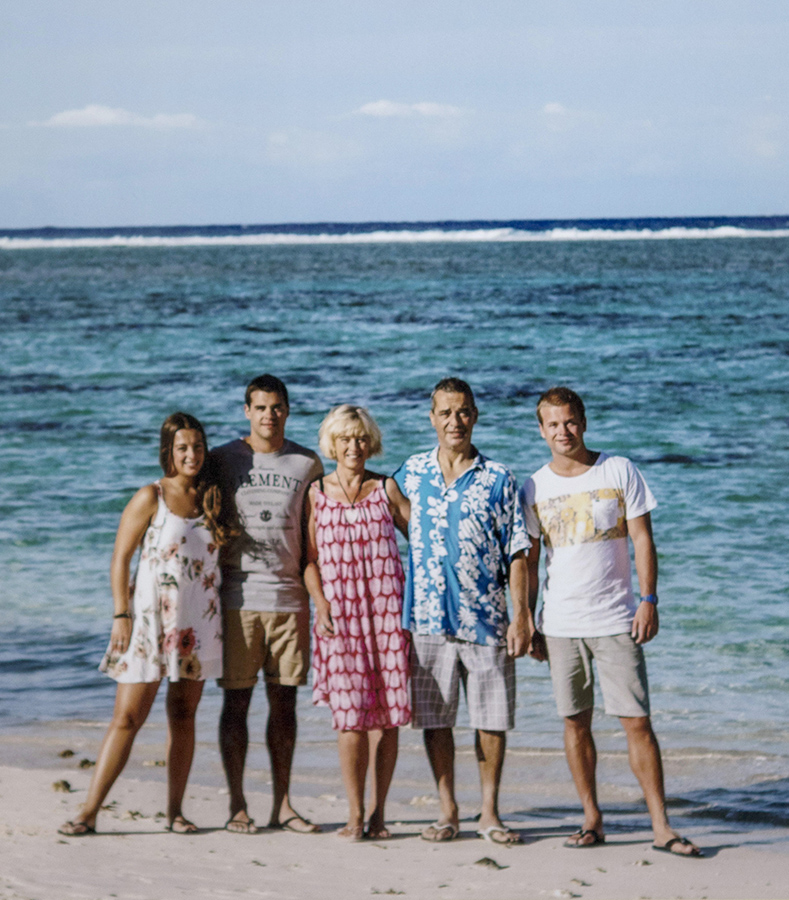
Julie’s eldest son Samuel, then 27, died in a tragic rafting accident just eleven days after they farewelled Paul.
The simplicity of life on the Camino is a big drawcard for those who choose to do it. Pilgrims sleep in hostels along the way, carrying everything they need on their backs as they walk about 25km a day.
“The key word is distraction,” Julie says.
“You sleep soundly because you’re physically exhausted. Then the alarm goes off and the idea is to be out and off quite early, so there’s a real structure to that. And just the sheer beauty of waking up in the morning, all you need to do is repack your backpack for the day, put your clothes on and start walking. You’d be walking, you’d be thinking, but also concentrating on the beauty around you, so thoughts about what had happened would be intermixed by really special stuff: appreciating beauty, listening to music, talking to others.”

And, of course, the nature of Camino Skies means it was all captured on camera for the documentary. The high points, and the low points.
Of the six pilgrims featured in the documentary, Julie was not the only one who had lost a child. But the cruelty of the one-two blow of the loss of Paul from cancer, followed by the total shock of then losing Sam, meant that life was still very raw for Julie while on the road.
There’s one scene about halfway through the documentary when the group are in a small bar in a Spanish town, and there’s a soulful musician playing the guitar, singing with one of those voices that goes straight through the heart. The film shows Julie silently experiencing a wave of pure, overwhelming grief.
“The guitarist had started playing Hallelujah, which is the song we had at both Paul’s and Sam’s funeral. And then there’s Noel [the cameraman] trying to get it, and it’s pretty clear I’m trying to turn my back,” Julie says.
“But it never felt intrusive… you just feel a little… embarrassed, I guess. Having all those emotions come out! But at the same time, I’m proud. I’m proud it’s there – it’s real, and it’s raw, but that’s how it happened. That’s how I was feeling.”
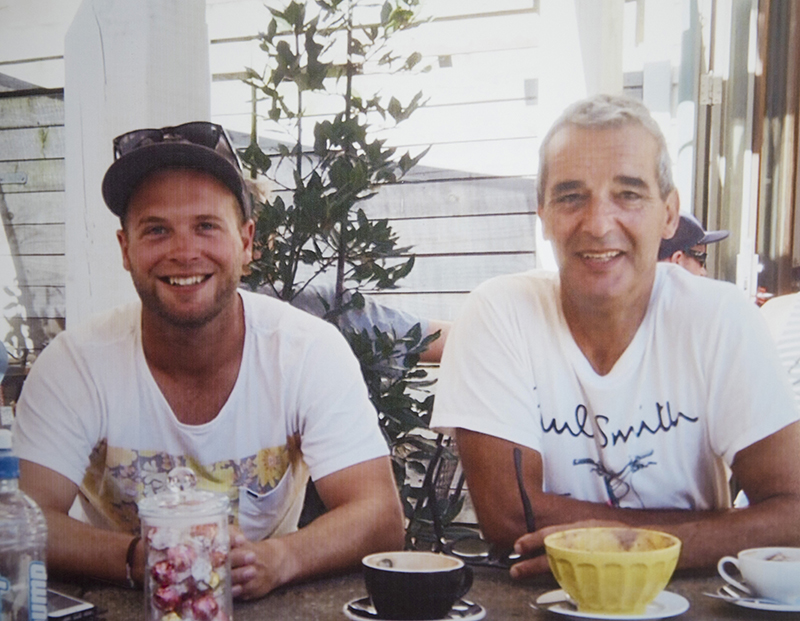
Sam with his dad Paul
For a lot of pilgrims who do the famous walk, there’s a belief that the Camino calls you. Julie has never considered herself a spiritual person – “If anything, I’m an atheist” – but she has become someone far more in tune with seeing signs since Paul and Sam died, something that started happening frequently while on the Camino.
The first sign was a sudden influx of heart-shaped rocks.
“The background to that is my son Sam was a bit of a softie,” Julie recalls with a smile. “He took up trekking with a vengeance in his last three or four years before he passed away, and wherever he would go, he would send pictures of himself, holding up a stone in the shape of a heart.” The cover of his memorial service programme was one such photo.
“He’d send them to me and he’d send them to his girlfriend. So thereafter, suddenly I and my remaining two children, Jared and Kristi, would be walking along and see a stone in a heart shape.”
The synchronicity of the signs was always comforting, Julie says. And it wasn’t only the stones that kept making an appearance on the Camino trail.
“I’d be just about to fade for the day and suddenly a couple of white butterflies would turn up next to me as I was walking. The other big one was the good old double rainbows. I had quite a few circumstances of doing something significant where I was thinking about Paul or Sam and there would emerge a double rainbow.”
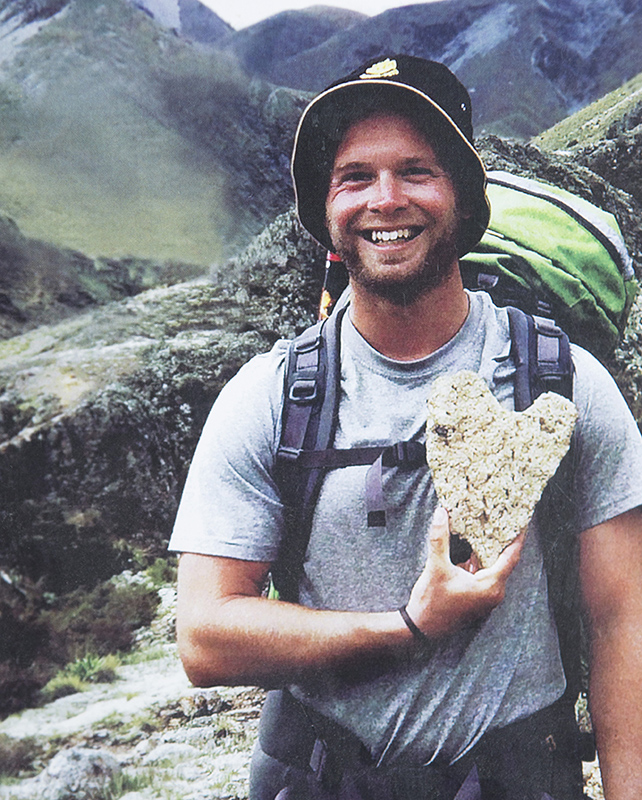
Spotting heart shaped rocks along the Camino was just one of the poignant encounters Julie had.
When you are a clinical psychologist and your life’s work has been about helping people process their emotions, there is, you would imagine, a lot of grief work you’ve already helped people through. But after losing Paul and Sam, Julie says there is a big difference between talking the talk and walking the walk.
Traditional psychology follows the classic Kübler-Ross theory of the five stages of grief: denial, anger, bargaining, depression and acceptance.
“It was a very predictive model of grief, where you went through the five stages in an orderly fashion and you’d come out the other end two years later and be good to go. And it just couldn’t be further from the truth,” Julie says wryly.
“Some of those stages are definitely there but there’s nothing orderly about grief. It’s very idiosyncratic for whoever might be going through it.
“Everything I’ve been trying to do, whether it’s intuitive or whatever, is to show that there is a different model of grieving that enables you to keep on living and you just live adjacently to that thought process. It does sneak up on you at random moments and you can’t necessarily predict when those are… you’ve got to go with the flow.”
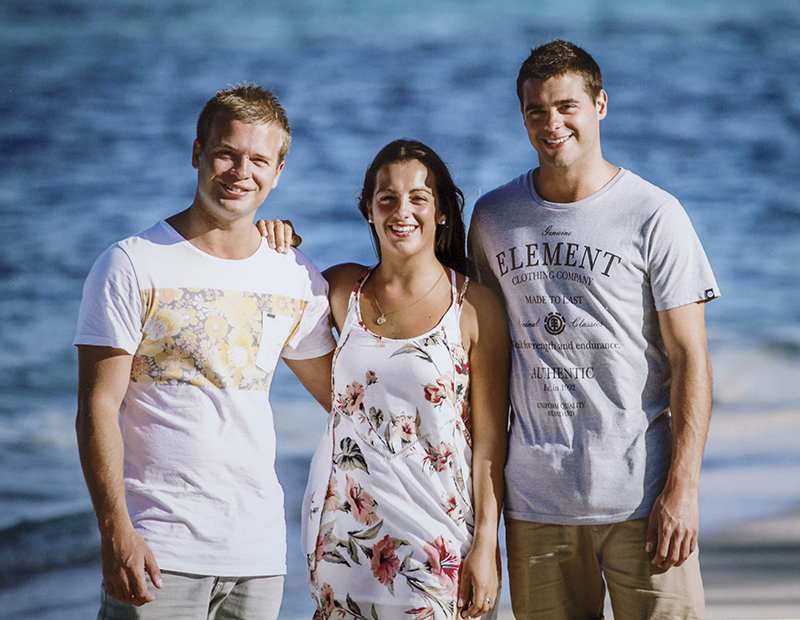
Sam with his siblings Kristi and Jared.
Travel become a balm for the soul in the aftermath of the double loss; Julie coined 2018 her “year of active grieving”.
She started off last year doing a cycling tour around Sri Lanka to raise money for Variety the Children’s Charity, and straight after the Camino she capitalised on being the fittest she’d ever been (walking 800km will do that to you) by signing up for the New York Marathon, where she ran to raise money for the Mental Health Foundation.
Getting on a plane and going far from home, she says, was the start of finding happiness again. “I could be myself,” she says.
“It was easier without the world watching… To jump on a plane seven times last year was the best thing I could possibly do for myself. In Sri Lanka, for example, I could just be myself – I could tell the others when and if I saw fit. I could let out little bits of vulnerability.
“I do appreciate that not everyone is as” – she puts air quotes up – “‘lucky’ as me to be able to go off and do some of the adventures I’ve done. But people can do other things… just keep on moving, keep on connecting. Seek out variety and new adventures. Those are key messages, and you don’t have to jump on a plane to do them.”
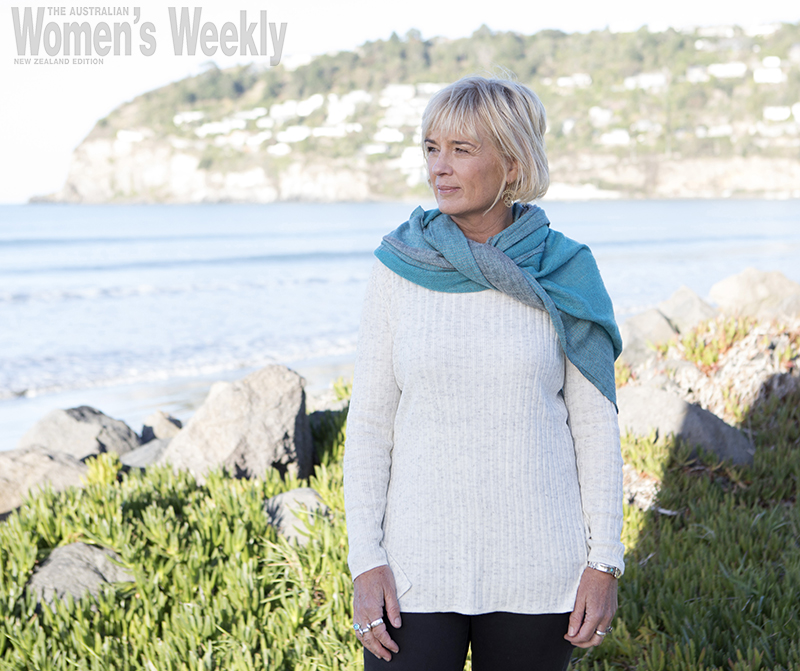
Julie has started working with Dr Lucy Hone, a fellow Christchurch mum who also had to turn her academic training in the field of wellbeing into personal practice when her 12-year-old daughter Abi was killed in a car accident in 2014.
Lucy co-created the New Zealand Institute of Wellbeing and Resilience, and Julie has come on board to work with them, doing speaking engagements around resilient grieving.
“It’s such a perfect fit,” Julie says. “It talks to my personal story and my passion going forward for teaching and encouraging optimism and strength in people, so that they’re faced with tools to meet adversity head on, as opposed to ‘ambulance at the bottom of the cliff’ stuff.”
Of her own resilience, Julie says, “I’ve learned that I do have an innate kind of capacity to dig deep and pull out what’s required. It’s not all roses. There have been times of weeping into the pillow. But I think that’s important too – to have a good, self-indulgent few hours. It’s mostly at night time – and then up and at it the next day.”
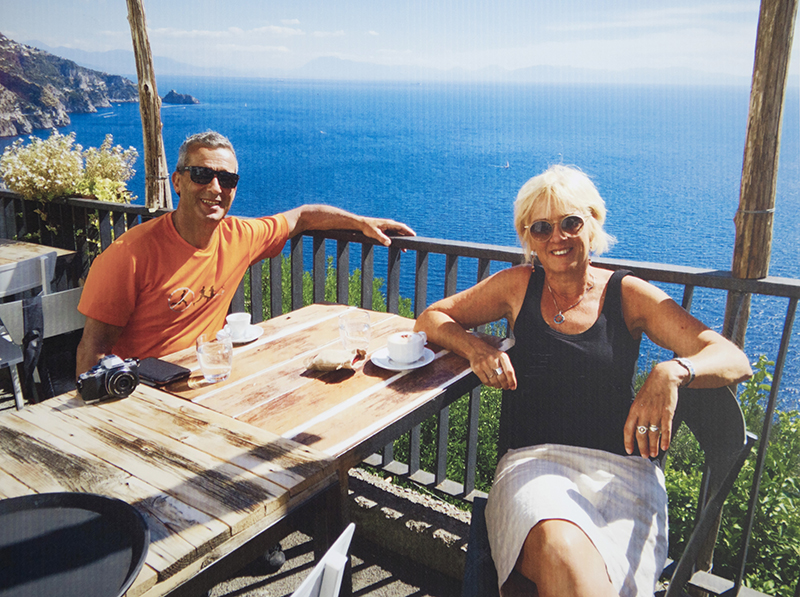
Julie says they were “really lucky” that the family’s travels before Paul’s death created fabulous memories.
For the last scene of Camino Skies, after Julie and the team had finished the walk at Santiago Cathedral, where they were all given the official pilgrim’s diploma, there was a final stop to make.
The Costa da Morte – the Death Coast – is located in Finisterre. Once believed to be the end of the world, it was named for the Latin phrase finis terrae, which translates as “land’s end”. It’s an extra three-day walk that particularly keen pilgrims can tag onto the end of their trip. Unlike the main route, which traverses the picturesque, undulating European landscape, Costa da Morte is a jagged, isolated place where the rocks disappear into the sea; it truly looks like the end of earth.
In those last few days, it was just Julie, cameraman Noel and production assistant Phoebe. For the length of the Camino, Julie had been carrying the ashes of Paul and Sam in her backpack.
“I carried them the entire way. They’d started off” – she pauses, laughing quietly – “in two little snaplock bags. I had one labelled Sam, and one labelled Paul. Because I never knew… I was a bit reticent in sussing out what was and wasn’t allowed through Customs.”
In Santiago, once the walk was finished, she bought two glass containers to put the ashes into. Early in the morning, the filming team and Julie trekked out to the lighthouse that sits at the peak of the coast, and Julie sprinkled the ashes of her son and her husband into the roaring Atlantic Ocean.
“I had started off the journey in Biarritz, [before beginning] the Camino at St-Jean-Pied-de-Port. I’d gone out to the lighthouse [in Biarritz] and sprinkled some of their ashes there, so it was like taking them coast to coast. They were both water-orientated people… it was just a nice ending. A powerful release, setting them free. Together.”
Julie’s coping strategies
Julie shares how the Mental Health Foundation’s six ways to wellbeing helped her during the past two years.
Stay active: “If you feel like you’re looking after yourself – and not just exercise, but eating well, trying to sleep as well as you can –
you do feel like you’re controlling your emotions rather than your emotions controlling you. If your body is feeling healthy and good, then your mind tends to follow.”
Connect: “Keep on connecting with people – it’s really important not to withdraw or hide away.”
Keep on learning: “Find something that will stimulate and distract you – academic study, taking up a hobby, doing something creative.”
Focus: “Choose, with intention, what you are going to focus on.”
Accept the good: “No matter how tough life is, there is always something good that’s worth paying attention to. The memory of grief will never entirely go away but its intensity will dissipate.”
Giving:” I got so much out of the altruistic nature of last year – going to Sri Lanka and doing the New York marathon. It gave me great joy to know that I’d raised money to help people.”

